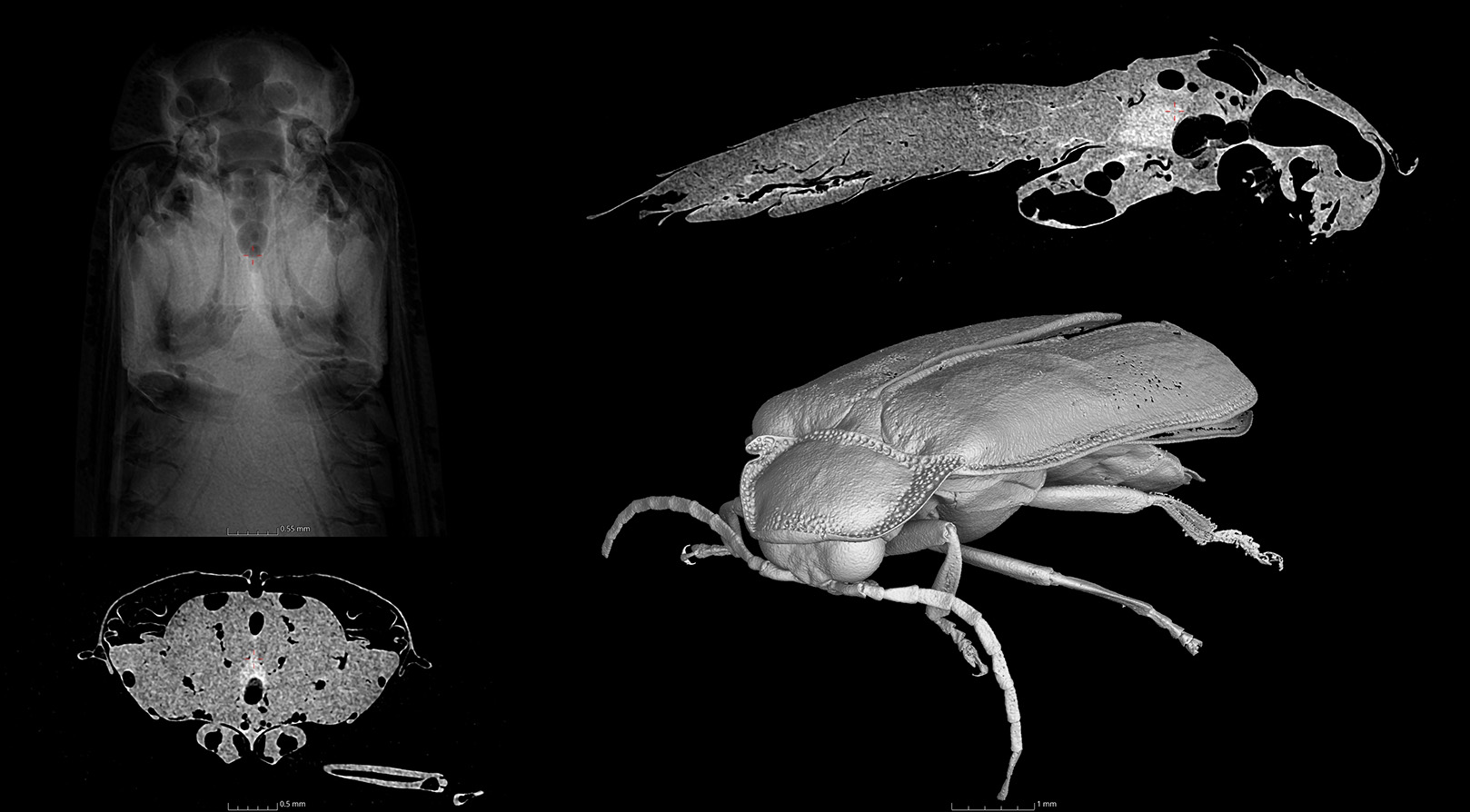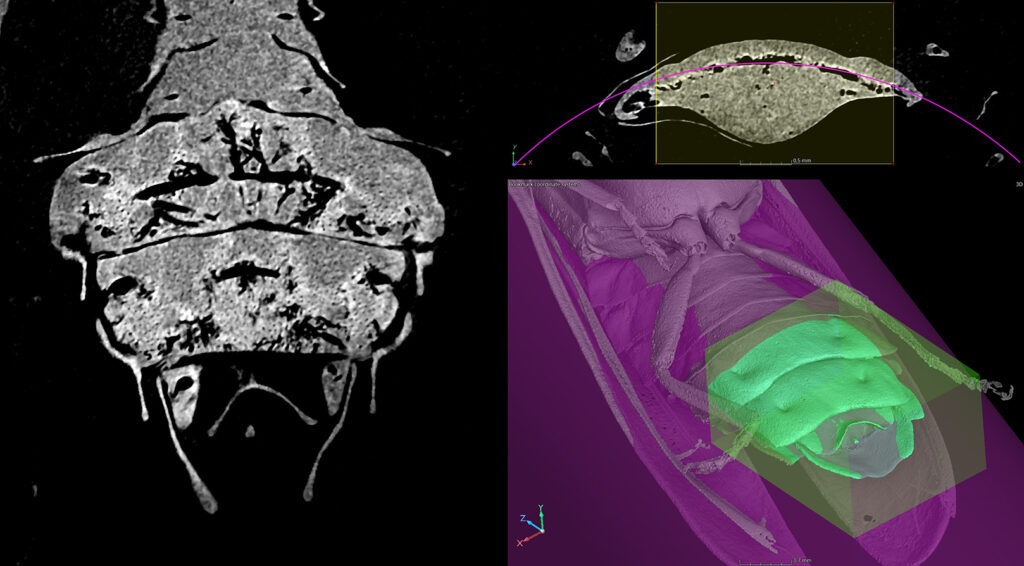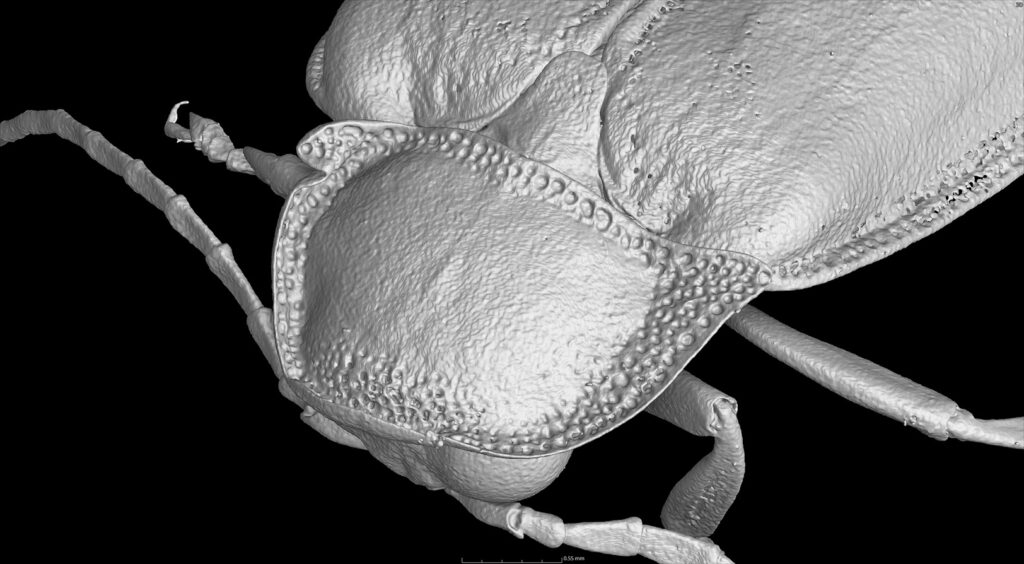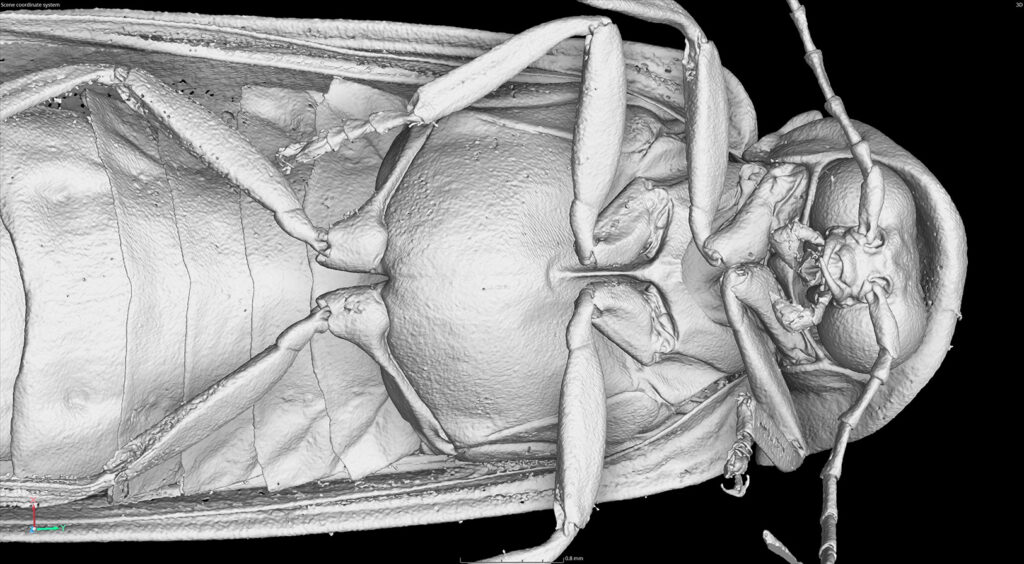
Fireflies aren’t just tiny flying lanterns lighting up summer nights; they’re nature’s own glow-in-the-dark engineers! These little beetles use a built-in chemical lab to make cold, bright light with amazing efficiency. But they’re more than just pretty blinks: fireflies help us study bioluminescence, inspire new tech, and remind us how complex even the smallest creatures can be.
In this CT scan deep dive, we’ll go beneath the glow to explore what makes a firefly light up by zooming in on its glowing belly, air-filled tubes, and armor-plated head to see the hidden structures that make the magic happen.

Fireflies light up thanks to a cool chemical glow show inside their bodies. An enzyme called luciferase helps turn a special chemical, luciferin, into light, but only when oxygen and energy (ATP) are around.
Their glowing belly, called the lantern, isn’t just glowing by magic, it’s built for it! The shell is kind of like a tiny, see-through sponge (tiny black holes shown below) that lets the light shine through easily. The black tubes you see are like little air pipes (tracheae) bringing oxygen right where the glow happens, because without oxygen, there is chemical reaction to produce light.
And those bright spots? They’re special shiny crystals that work like mirrors, bouncing the light out so the firefly shines bright and clear. Inside, little cells packed with glow-making chemicals do the real work of lighting up the night.

Fireflies wear a built-in helmet called the pronotum, a tough little shield that covers their head like a hood. Even though it’s technically part of the chest (thorax), it stretches forward to protect the firefly’s eyes, antennae, and other important head parts from bumps, dirt, and hungry predators.
Look closely and you’ll notice it’s not just smooth. Some fireflies have little pits or crown-like ridges, kind of like bug battle armor. These textures can be different between species or sexes, and might even help fireflies tell who’s who when they’re blinking their lights across the night sky.


